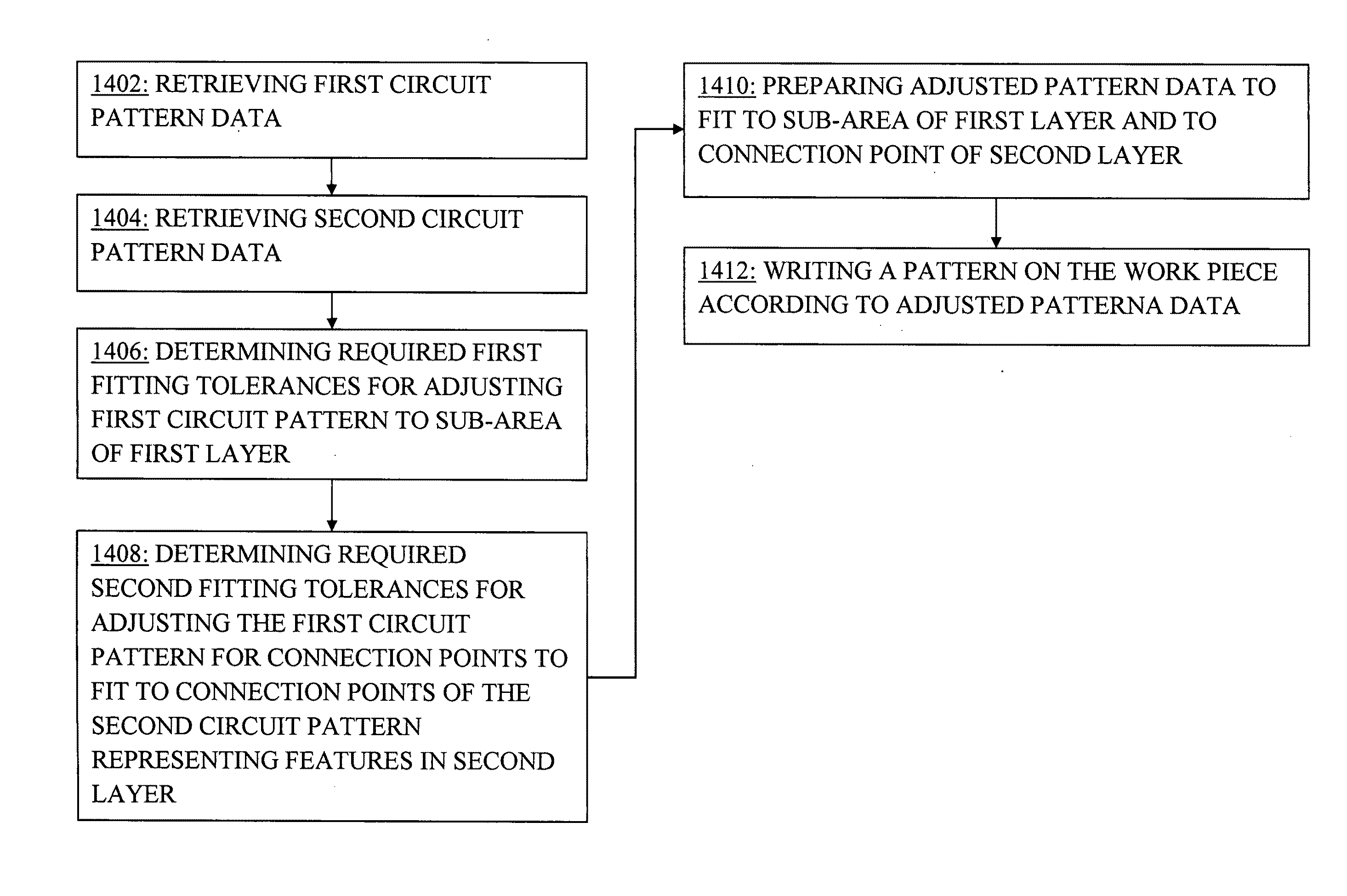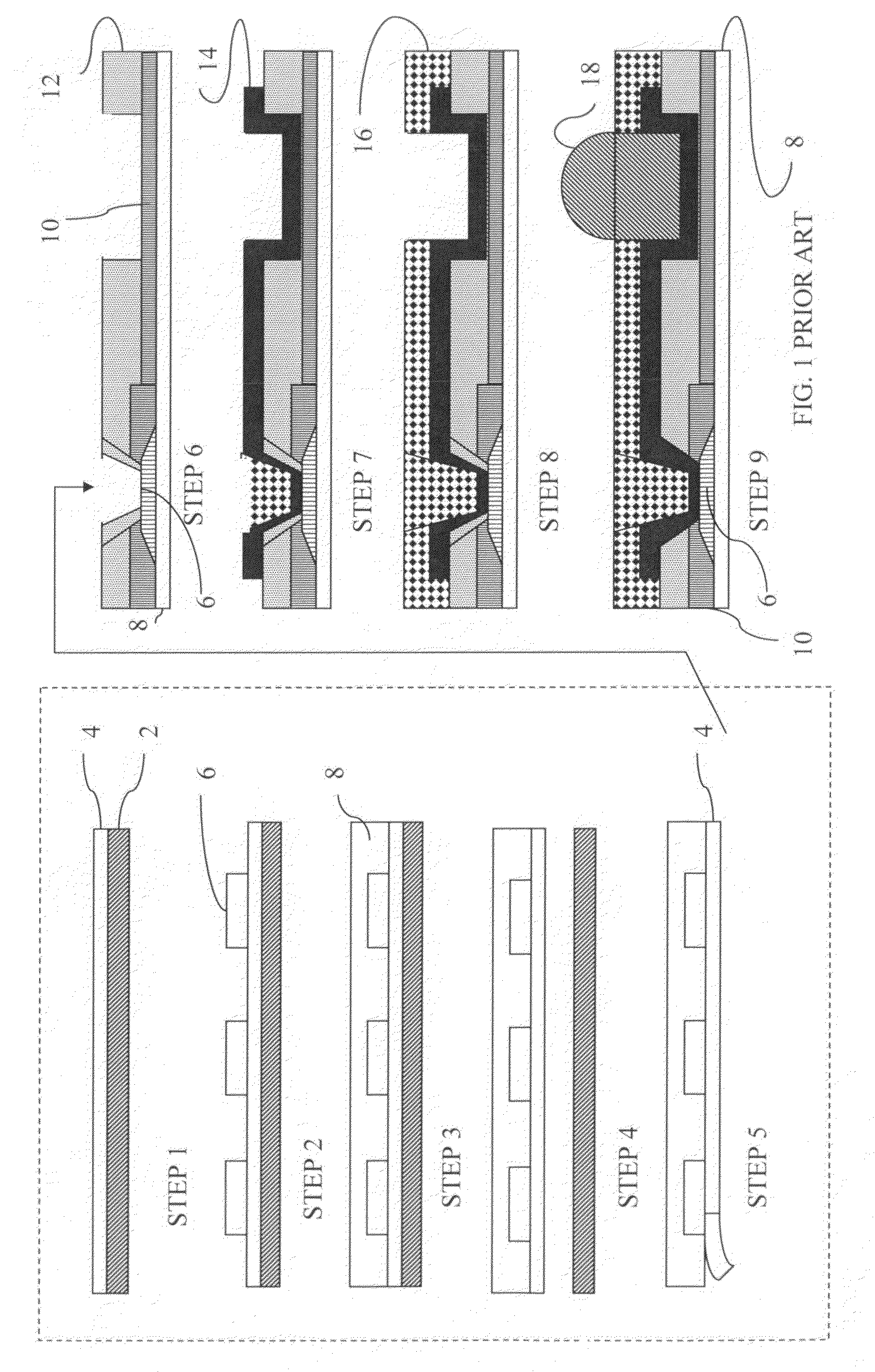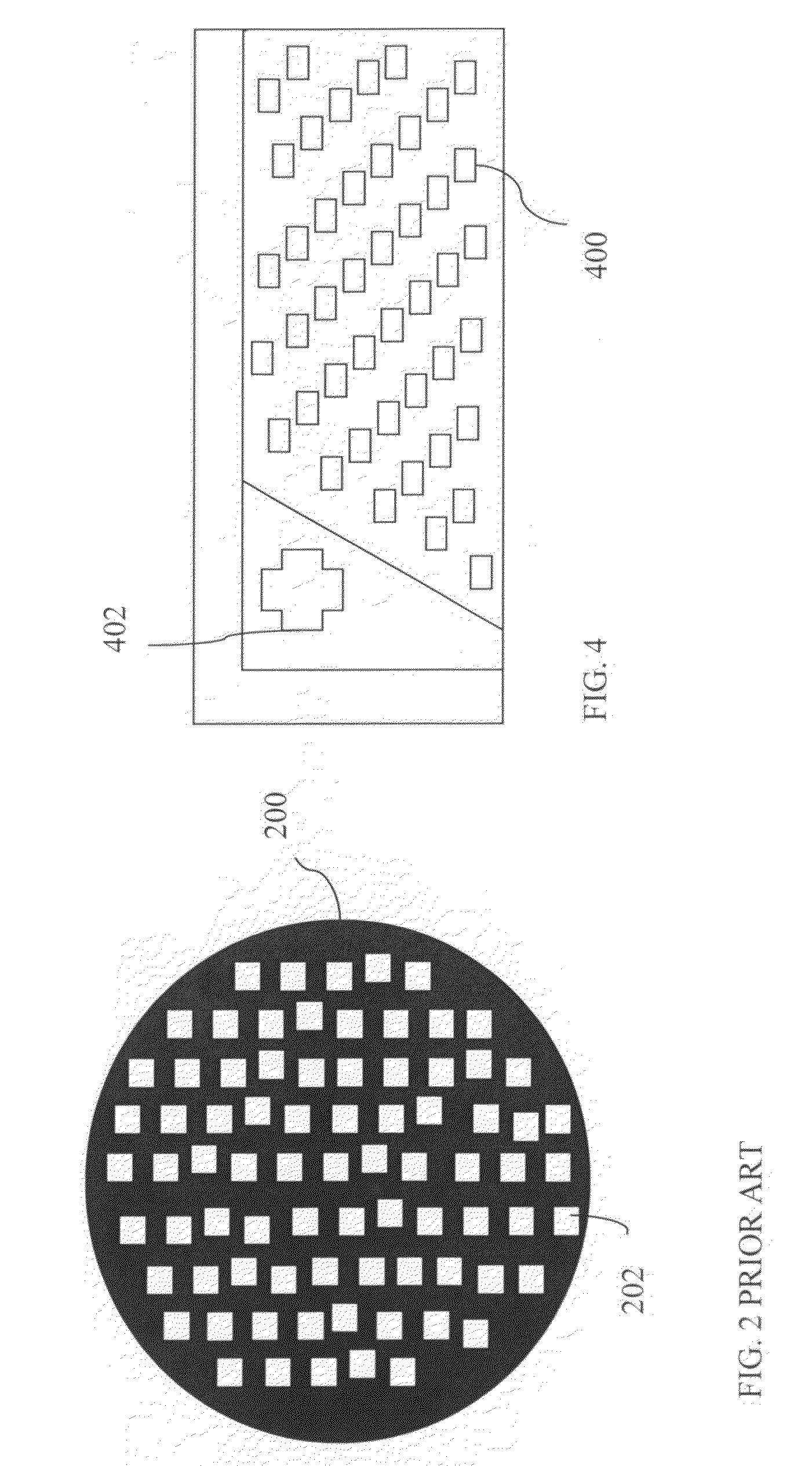Method and apparatus for performing pattern alignment to plurality of dies
a plurality of dies and pattern technology, applied in the field of laser pattern imaging, can solve the problems of time-consuming process, limiting productivity, and current requirements for the takt time that sets the pace for the manufacturing process of products comprising patterned layers cannot be met, so as to avoid edge roughness and bad connections
- Summary
- Abstract
- Description
- Claims
- Application Information
AI Technical Summary
Benefits of technology
Problems solved by technology
Method used
Image
Examples
Embodiment Construction
[0079]Workpiece
[0080]For the purpose of this application text the term workpiece is used to denominate any carrier of a surface layer upon which a pattern can be printed with a laser direct imaging system. For example a silicon substrate or a silicon wafer for a printed circuit board workpiece, or an organic substrate. Workpieces may have any shape, such as circular, rectangular or polygonal, and may have any size for example in a piece or in a roll.
[0081]Die
[0082]For the purpose of this application text the term die is used to denominate a passive component, an active component, or any other component associated with electronics. For example, a die may be a small block of semiconducting material, on which a given functional circuit is fabricated.
[0083]Local Alignment
[0084]For the purpose of this application text the term local alignment is used to denominate alignment in relation to alignment features, for example alignment marks, on an individual die or on a group of dies.
[0085]Gl...
PUM
 Login to View More
Login to View More Abstract
Description
Claims
Application Information
 Login to View More
Login to View More - R&D
- Intellectual Property
- Life Sciences
- Materials
- Tech Scout
- Unparalleled Data Quality
- Higher Quality Content
- 60% Fewer Hallucinations
Browse by: Latest US Patents, China's latest patents, Technical Efficacy Thesaurus, Application Domain, Technology Topic, Popular Technical Reports.
© 2025 PatSnap. All rights reserved.Legal|Privacy policy|Modern Slavery Act Transparency Statement|Sitemap|About US| Contact US: help@patsnap.com



